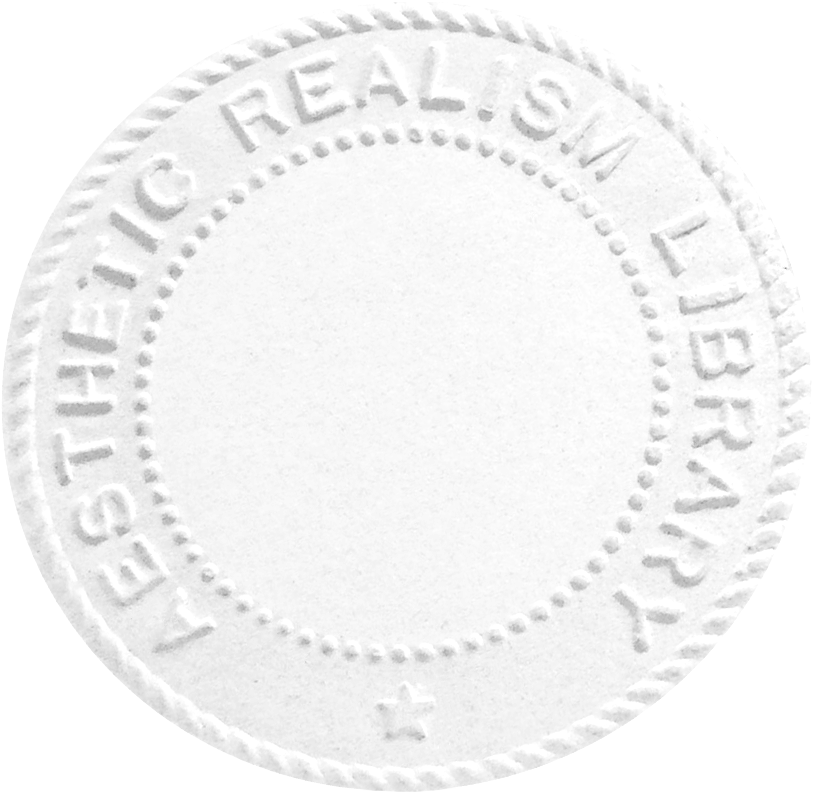Poetry of Eli Siegel
Free Poem on “The Siegel Theory of Opposites” in Relation to Aesthetics
Vivent les contrariétes!—Antoine-Marie Lemierre
Aesthetics is the science of what is,
When that which is, is seen as opposites—
In common language, when it’s beautiful.
How black and white; and large and small; what’s warm,
What’s cool, make deepest one—that’s what, at first,
The study of aesthetics is about.
And then there are—ah, yes—the fancier things:
How urgency’s at one with calm; the way
Outline and color make a one in art;
How slowness and how speed together meet
In varied dance, and in a line of verse;
Within a chord; and oratorio.
Among the fancier things—as I have said
They were—is narrative-description in
A line of prose; or in a work—entire—
By Dickens, say, where Emily’s described
And much is told of what she said and did,
In David Copperfield. It’s well to say
(Since rest and motion are in Pickwick, too,
A fat, fat work where single sentence lives)
That humor has the opposites likewise.
The rest and motion in a Henry James
Don’t contradict them in a Remus tale.
When calm and tenseness meet a certain way,
The laughter may be mighty at this point.
The mingling of the torrent and the cube
Is deep, sharp cause of what’s ridiculous,
And also lofty loveliness in art.
Repose and force are one in poetry,
They’re one in Seurat, Delacroix, Van Gogh.
What’s shown—revealed—and what is hinted at
Are one in Dürer and in Keats. The large
And delicate are managed well by Scott
In novels by him having history.
Well, Shakespeare—he has opposites so much,
There’s gorgeous wealth and wealth in meeting them.
Othello is dynamic, keen, yet numb,
Unseeing; here akin to Laertes—
Whose lack of subtlety is placed against
His father’s overmuch of subtlety.
Velasquez’ characters resemble those
Of Shakespeare—stern and delicate; alive:
And so, at times, grotesque. The vision of
What’s here meets vision of what’s far away—
A thing reflected mingles with the here,
The seen. When Hamlet is made one with space,
It is like doings in Velasquez’ work:
Inanimate and animate are one
In picture of a boy and leaping horse;
In Macbeth looking out towards air and dark—
Which go out on all sides. What’s weak, what’s strong,
Are both in Leonardo and the play,
King Lear. Always the surface and the depth
Of things are subtly, deeply unified
In what is made by man and beautiful
As made by man. A cool contraction and
A widening are felt at once by mind
Responding to what’s pleasing by its form.
Specific is at one with general,
The playful with the grandiose; the great
With what’s ridiculous; the mighty leap
With that which glides; the sternly still and one
With that which, edgy, jumps; THE PERSONAL
WITH THE IMPERSONAL; the massive That
With skipping these—all this in painting, dance
The drama, poem; in clay, in stone, in steel,
As formed by potter, sculptor, architect.
The bronze Ghiberti used in making doors
Is dignified and lively as the lines
In sprightly poem, as motions in a dance.
That has its meaning and its vividness.
II
The opposites are surely elsewhere, too,
In more, more ways, my friends, in more, more things.
Ah, let us see them where they are—because
They make OURSELVES, they make the WORLD, that which
In honesty, we like; in pride, we are.
From Hot Afternoons Have Been in Montana: Poems (Definition Press)
© 1956 by Eli Siegel



Note:
Free Poem on “The Siegel Theory of Opposites” in Relation to Aesthetics. 1956. This poem is a blank verse comment, with samples, on Is Beauty the Making One of Opposites? published by the Terrain Gallery, February 1955, reprinted in The Journal of Aesthetics & Art Criticism, December 1966. The poem appeared in Poetry Public, 1956.